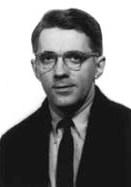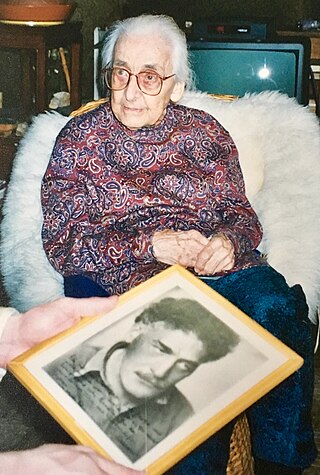Related Research Articles

David Eugene Tudor was an American pianist and composer of experimental music.

John Milton Cage Jr. was an American composer and music theorist. A pioneer of indeterminacy in music, electroacoustic music, and non-standard use of musical instruments, Cage was one of the leading figures of the post-war avant-garde. Critics have lauded him as one of the most influential composers of the 20th century. He was also instrumental in the development of modern dance, mostly through his association with choreographer Merce Cunningham, who was also Cage's romantic partner for most of their lives.

Morton Feldman was an American composer. A major figure in 20th-century classical music, Feldman was a pioneer of indeterminate music, a development associated with the experimental New York School of composers also including John Cage, Christian Wolff, and Earle Brown. Feldman's works are characterized by notational innovations that he developed to create his characteristic sound: rhythms that seem to be free and floating, pitch shadings that seem softly unfocused, a generally quiet and slowly evolving music, and recurring asymmetric patterns. His later works, after 1977, also explore extremes of duration.

Aleatoricmusic is music in which some element of the composition is left to chance, and/or some primary element of a composed work's realization is left to the determination of its performer(s). The term is most often associated with procedures in which the chance element involves a relatively limited number of possibilities.

Christian G. Wolff is an American composer of experimental classical music and classicist.

Mercier Philip "Merce" Cunningham was an American dancer and choreographer who was at the forefront of American modern dance for more than 50 years. He frequently collaborated with artists of other disciplines, including musicians John Cage, David Tudor, Brian Eno, and graphic artists Robert Rauschenberg, Bruce Nauman, Andy Warhol, Roy Lichtenstein, Frank Stella, and Jasper Johns; and fashion designer Rei Kawakubo. Works that he produced with these artists had a profound impact on avant-garde art beyond the world of dance.
4′33″ is a three-movement composition by American experimental composer John Cage. It was composed in 1952, for any instrument or combination of instruments, and the score instructs performers not to play their instruments during the entire duration of the piece throughout the three movements. The piece consists of the sounds of the environment that the listeners hear while it is performed, although it is commonly perceived as "four minutes thirty-three seconds of silence". The title of the piece refers to the total length in minutes and seconds of a given performance, 4′33″ being the total length of the first public performance.
Europeras is a series of five operas by the composer John Cage. Cage explained the punning title thus: "For two hundred years the Europeans have been sending us their operas. Now I'm sending them back."

Grete Sultan was a German-American pianist.
Indeterminacy is a composing approach in which some aspects of a musical work are left open to chance or to the interpreter's free choice. John Cage, a pioneer of indeterminacy, defined it as "the ability of a piece to be performed in substantially different ways".
Music of Changes is a piece for solo piano by John Cage. Composed in 1951 for pianist and friend David Tudor, it is a ground-breaking piece of indeterminate music. The process of composition involved applying decisions made using the I Ching, a Chinese classic text that is commonly used as a divination system. The I Ching was applied to large charts of sounds, durations, dynamics, tempo and densities.
Cheap Imitation is a piece for solo piano by John Cage, composed in 1969. It is an indeterminate piece created using the I Ching and based, rhythmically, on Socrate by Erik Satie.

Etudes Australes is a set of etudes for piano solo by John Cage, composed in 1974–75 for Grete Sultan. It comprises 32 indeterminate pieces written using star charts as source material. The etudes, conceived as duets for two independent hands, are extremely difficult to play. They were followed by two more collections of similarly difficult works: Freeman Etudes for violin (1977–90) and Etudes Boreales (1978) for cello, or piano, or both together.
String Quartet in Four Parts is a string quartet by John Cage, composed in 1950. It is one of the last works Cage wrote that is not entirely indeterminate. Like Sonatas and Interludes for prepared piano (1946–48) and the ballet The Seasons (1947), this work explores ideas from Indian philosophy.
American avant-garde composer John Cage (1912–1992) began composing pieces for solo prepared piano around 1938–40. The majority of early works for this instrument were created to accompany dances by Cage's various collaborators, most frequently Merce Cunningham. In response to frequent criticisms of prepared piano, Cage cited numerous predecessors. In the liner notes for the very first recording of his most highly acclaimed work for prepared piano, Sonatas and Interludes, Cage wrote: "Composing for the prepared piano is not a criticism of the instrument. I'm only being practical." This article presents a complete list of Cage's works for prepared piano, with comments on each composition. All of Cage's indeterminate works for unspecified forces can also be performed on or with Prepared Piano.
The Seasons is a ballet with music by John Cage and choreography by Merce Cunningham, first performed in 1947. It was Cage's first piece for orchestra and also the first to use what Cage later called the gamut technique, albeit in an early form.

Imaginary Landscape No. 1 is a composition for records of constant and variable frequency, large chinese cymbal and string piano by American composer John Cage and the first in the series of Imaginary Landscapes. It was composed in 1939.
Freeman Etudes are a set of etudes for solo violin composed by John Cage. Like the earlier Etudes Australes for piano, these works are incredibly complex, nearly impossible to perform, and represented for Cage the "practicality of the impossible" as an answer to the notion that resolving the world's political and social problems is impossible.
HPSCHD is a composition for harpsichord and computer-generated sounds by American avant-garde composers John Cage (1912–1992) and Lejaren Hiller (1924–1994). It was written between 1967 and 1969 and was premiered on May 16, 1969, at the Experimental Music Studios at the University of Illinois at Urbana–Champaign.

Five Pianos is a composition for five pianists composed in 1972 by American composer Morton Feldman. The piece is scored for five pianos and one celesta performed by the fourth pianist; the performers are also required to hum specific notes throughout the composition. It was first performed in Berlin on July 16, 1972, as part of the Berliner Musiktage festival, with the composer as one of the humming pianists.
References
- Pritchett, James. 1993. The Music of John Cage. Cambridge University Press. ISBN 0-521-56544-8
- Revill, David. 1993. The Roaring Silence: John Cage – a Life. Arcade Publishing. ISBN 1-55970-220-6, ISBN 978-1-55970-220-1